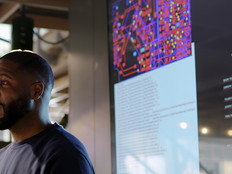State and Local Agencies Should Automate to Accelerate Innovation
State and local IT leaders can start by continuing to challenge pre-2020 assumptions (“Digital transformation takes forever!” “It’s too expensive!”) and lean into the concept of accelerated service delivery.
They should treat this as an immediate need, and as essential to the government-citizen dynamic. A trip to a state Department of Motor Vehicles office, once a nuisance, is now more than potentially unpleasant; it could be unhealthy.
Getting a driver’s license renewed through an online portal or mobile app — as simple as purchasing toothpaste from your favorite retailer’s website or app — is a much more enjoyable experience.
Enabling these interactions starts with proactive, creative thinking supported by agile technologies and methodologies that propagate faster development cycles. Tools such as containers and processes such as DevSecOps, for example, are key delivering digital services to citizens more quickly. State and local agencies must eschew old technologies and practices in favor of these modern development methods to accommodate citizens’ needs and rising expectations.
Automation is key to meeting these expectations. Automation helps agencies avoid low-value manual tasks that take up resources and time, giving them the chance to focus on high-value velocity and accelerated service delivery. Additionally, automation may become even more critical as state and local agencies manage a decreased workforce as a result of impending retirements.
Agencies are presented with a golden opportunity to move items from their “someday” list to a “today” list thanks to the American Rescue Plan Act. What better way to use those funds from a technology standpoint than investing in solutions that can benefit state and local employees and citizens for years to come?
RELATED: How can your agency accelerate digital services innovation?
Small Changes to Government Services Can Have Big Impacts
While some government services will inevitably still require in-person interactions, there are several small things that can be done to make processes easier and more efficient.
Not only can these new, sludge-free efficiencies deliver higher levels of citizen satisfaction, they could also potentially open new revenue streams for agencies: Users could be more likely to pay for services if they are easier to access.
Agencies have one goal: to serve their citizens. They’re not selling something; they’re trying to improve lives.
That puts them in a unique position to develop truly personal and meaningful interactions with their constituents. The pandemic jump-started those efforts, and they shouldn’t stop now. In fact, it’s a great time to double down on modernization initiatives.
EXPLORE: What IT infrastructure is needed to enable modern digital government services?










